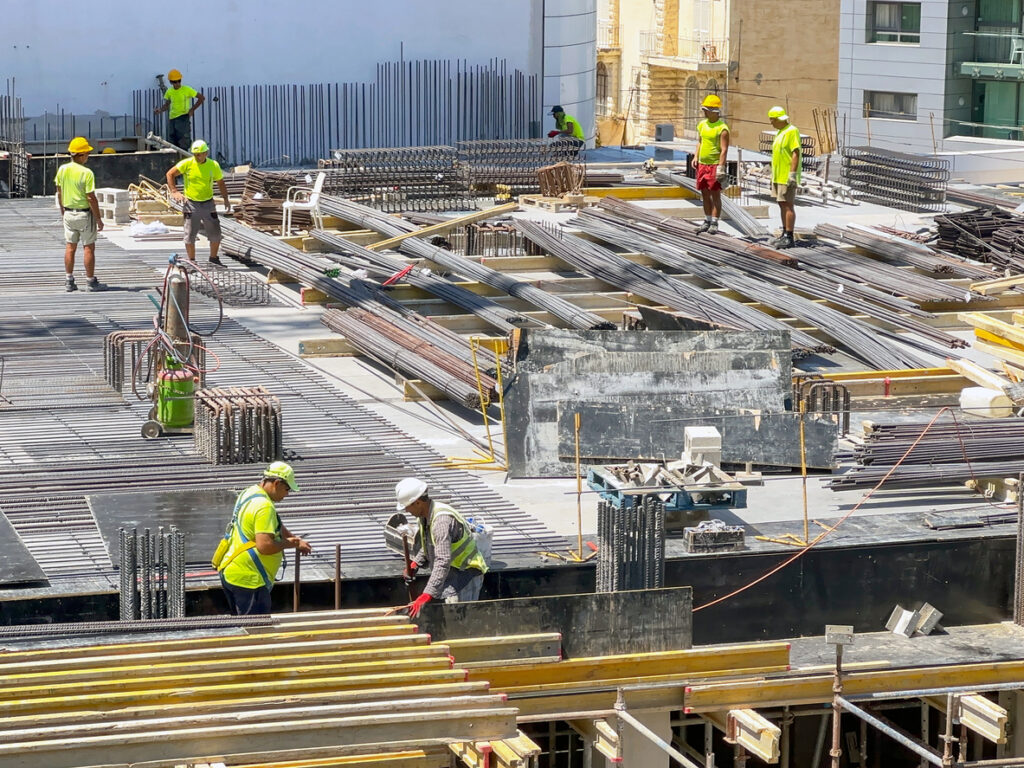The construction site is a dynamic environment where safety is paramount, with tasks such as scaling scaffolding and operating heavy machinery, each carrying its own set of risks. Professional safety training holds immense value in minimising these everyday risks.

Managing a construction business or overseeing a worksite comes with the significant duty of ensuring a safe work environment. It’s crucial that you’re armed with the appropriate knowledge and tools to make this possible.
The Role of Safety Training in Construction
At Boss Training, we bring a wealth of experience to the construction industry, offering training programs specifically crafted to address its unique needs. Our courses are certified by leading bodies, including CITB, IPAF, and PASMA, which underlines our commitment to quality and adherence to the highest standards.
We tailor our training to directly confront the everyday challenges faced on construction sites, ensuring that workers are well-prepared to navigate these risks with expertise and confidence. This focus not only enhances safety but also improves operational efficiency.
Safety training is essential for protecting construction workers from harm and ensuring safe site operations. Our safety training sharpens awareness, reduces accident risks, and is essential for maintaining a secure working environment. It’s not just about compliance; it’s about creating a safety-first mindset that leads to more efficient, productive, and incident-free projects.
Construction Site Safety Checklist
Maintaining a safe working environment in the construction industry requires a systematic, comprehensive approach. Our Construction Site Safety Checklist provides a detailed guide covering various aspects—from safety education and training to worksite cleanliness measures.

This extensive list also addresses welfare facilities, risk management planning, and equipment safety checks, among other crucial safety considerations.
1. Safety Education and Training
- Confirm that all workers have completed the required safety education and training, such as IPAF and PASMA training courses.
- Verify the availability of ongoing training resources to address new hazards or protocols.
- Schedule periodic safety briefings and discussions to reinforce knowledge.
2. Worksite Safety and Cleanliness
- Regularly inspect the site to ensure it’s free from hazards and obstructions.
- Implement systematic cleaning procedures to maintain a tidy work environment.
- Assign responsibilities for clearing debris and securing materials to prevent accidents.
3. Welfare Resources and Facilities
- Ensure that clean and accessible restrooms are available on site.
- Provide a rest area for breaks with drinking water and facilities for meal preparation.
- Make first-aid kits and emergency medical information readily available.
4. Risk Management: Planning and Assessments
- Conduct risk assessments for all site activities to identify potential hazards.
- Develop and communicate clear action plans for mitigating identified risks.
- Establish an emergency evacuation plan and ensure that all workers are familiar with it.
5. Equipment Safety and Maintenance
- Perform regular checks to ensure that all machinery and equipment are in safe working condition.
- Record and track maintenance activities to prevent equipment-related injuries.
- Train workers in the correct operation of construction equipment and machinery.
6. Additional Considerations
- Provide personal protective equipment (PPE) to all workers and ensure proper usage.
- Set up clear and informative signage around the construction site, including hazard warnings and safety reminders.
- Designate safety officers to oversee compliance with safety regulations and procedures.
- Encourage a reporting culture where workers can report unsafe conditions without fear of retribution.
- Ensure electrical safety by conducting checks on the site’s power supply system and using ground-fault circuit interrupters (GFCIs).
- Implement fall protection measures for any work that is carried out at height.
- Prepare for adverse weather conditions with appropriate gear and plans to secure the site.
- Keep an updated list of emergency contact numbers for all workers and nearby medical facilities.
A construction site that implements comprehensive training, cleanliness protocols, proper facilities, risk assessments, equipment maintenance, and other safety measures is essential for both worker well-being and project success.

Customised Construction Safety Solutions from Boss Training
Boss Training provides customised safety training designed specifically for construction companies. Our on-site training ensures that your team stays current with the latest safety standards and practices while maintaining on-site productivity.
In addition, Boss Training offers accessible online and virtual classroom options, making it easy for busy construction professionals to engage in continuous professional development. Our platforms are tailored to accommodate hectic construction schedules, ensuring that safety education remains convenient, comprehensive, and personalised to your requirements.
Our mission is to keep you, your staff and your business working safely. While we can’t check off everything on this list for you, we can provide the best education for you and your team.
If you would like to find out more about any of our courses, please don’t hesitate to get in touch with a member of our friendly team.